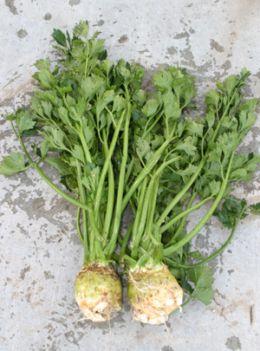Kohlrabi is a member of the cabbage family grown for its swollen, turnip-shaped portion of the stem which rests on the ground. The edible portion can be white, purple or green with a creamy white interior. They are eaten raw in salads or can be cooked like a turnip.
Fresh kohlrabi can be found the year round in Texas although it is most commonly available during fall and early winter.Commercial production is concentrated in the south Texas area but small plantings can be found statewide. Locally available kohlrabi can be found during March through May and again in the months of October through December.
Health Benefits of Kohlrabi
Kohlrabi improves energy circulation and eases stagnancy; it reduces damp conditions and so is effective for edema, candida, and viral conditions. It helps stabilize blood sugar imbalances and is used for hypoglycemia and diabetes. Kohlrabi reduces swelling of the scrotum. It is an excellent source of vitamin C and potassium. Kohlrabi is high in fiber and low in calories.
- Kohlrabi is an excellent source of vitamin C and potassium. It also contains good quantities of vitamin B6, folic acid, magnesium and copper.
- The leaves of Kohlrabi are rich in vitamin A. As such, they are very good for the health of our eyes.
- Kohlrabi improves the circulation of energy in our body and also eases stagnancy.
- It is effective against edema, candida, and viral conditions, as it is known to reduce damp conditions.
- Kohlrabi helps to stabilize the levels of sugar in the blood and is helpful in alleviating health conditions, such as hypoglycemia and diabetes.
- It is also helpful in reducing weight, as it is low in calories. At the same time, the fiber content in kohlrabi is very high.

